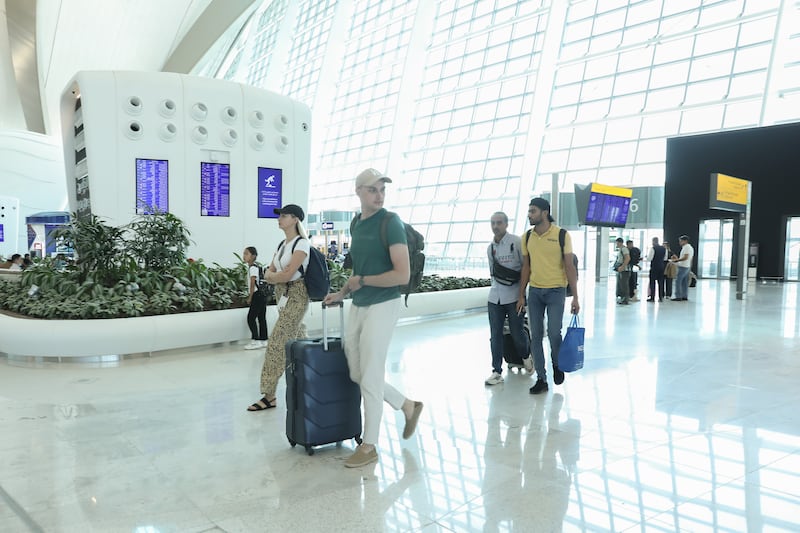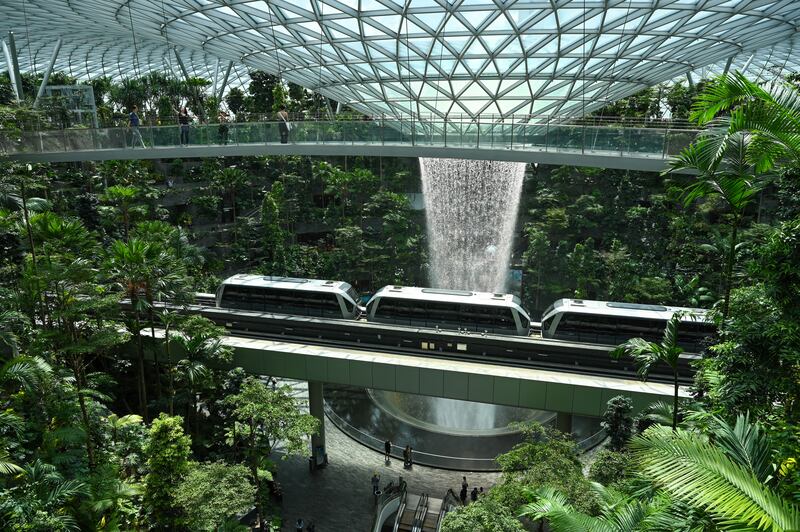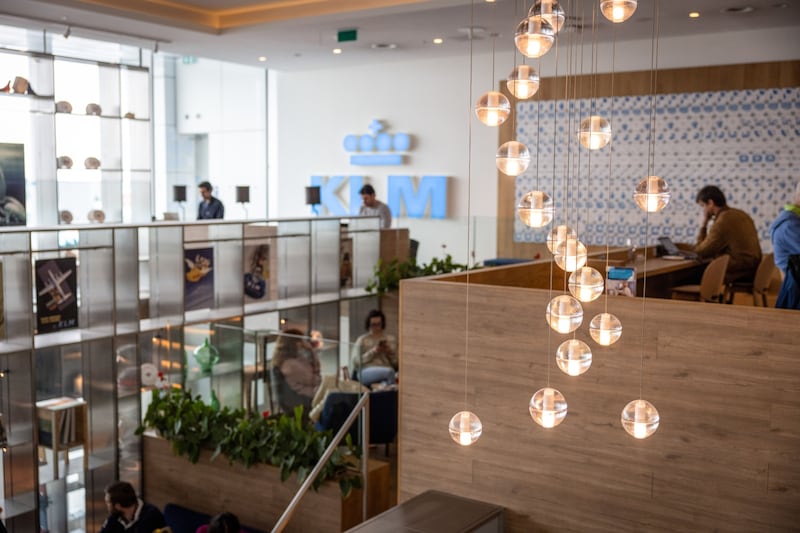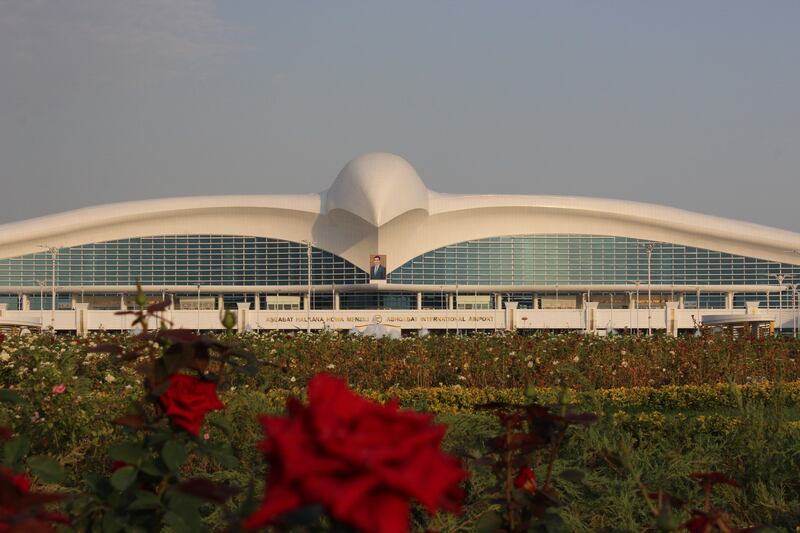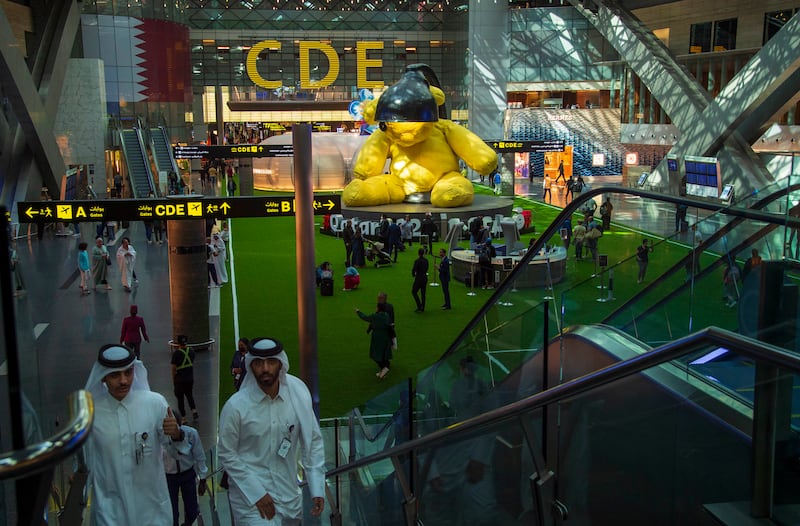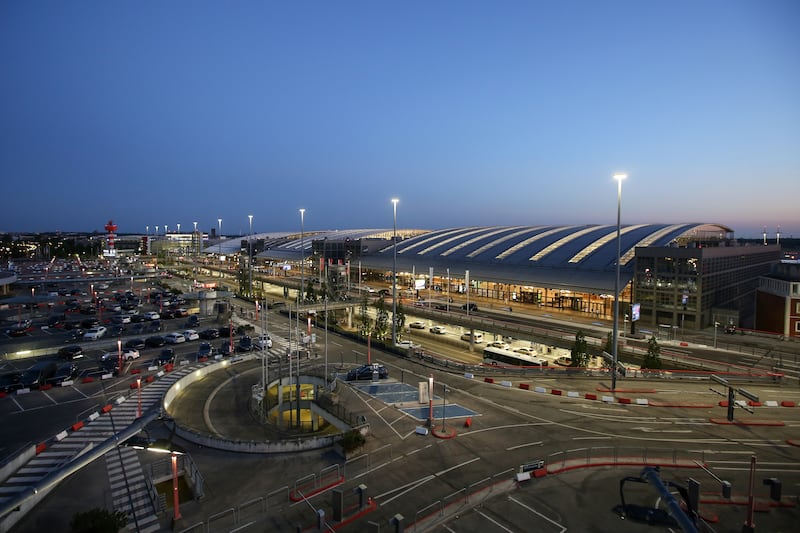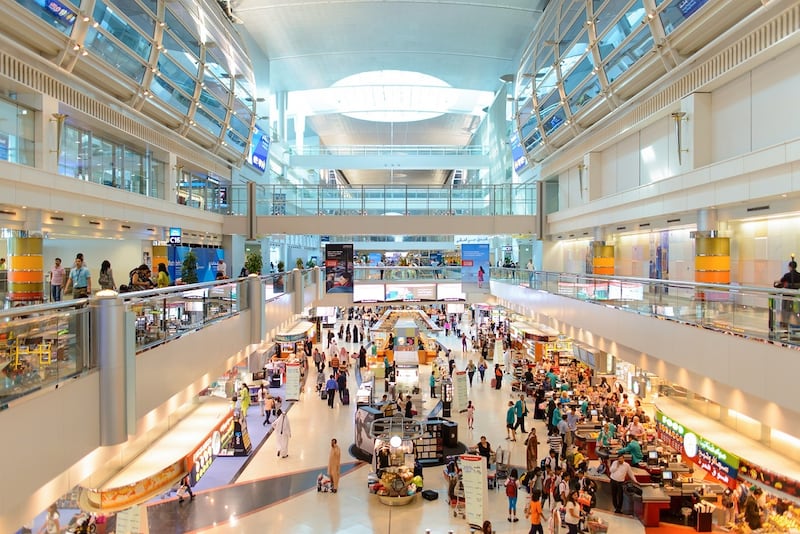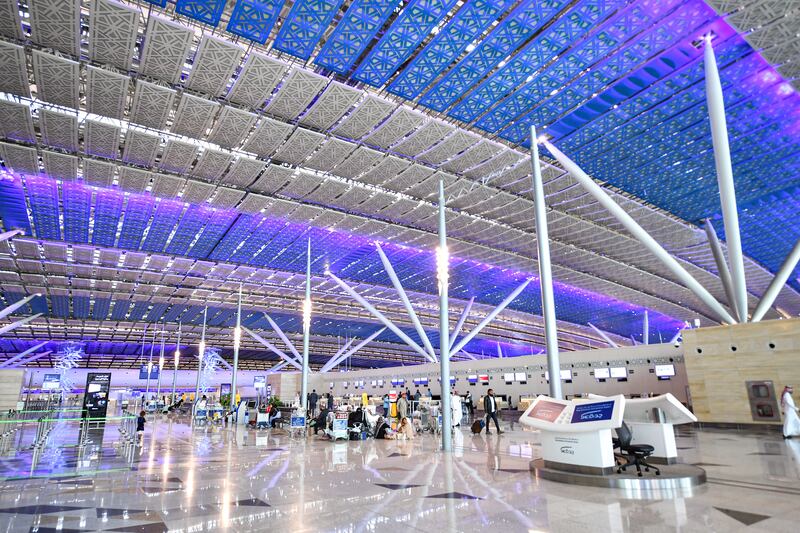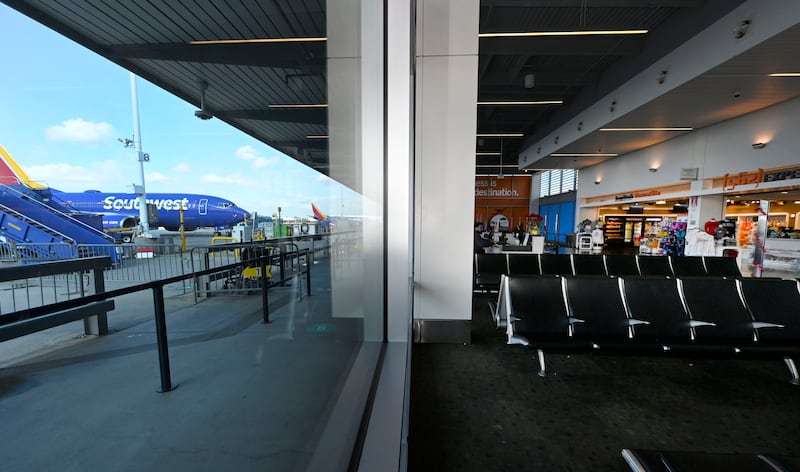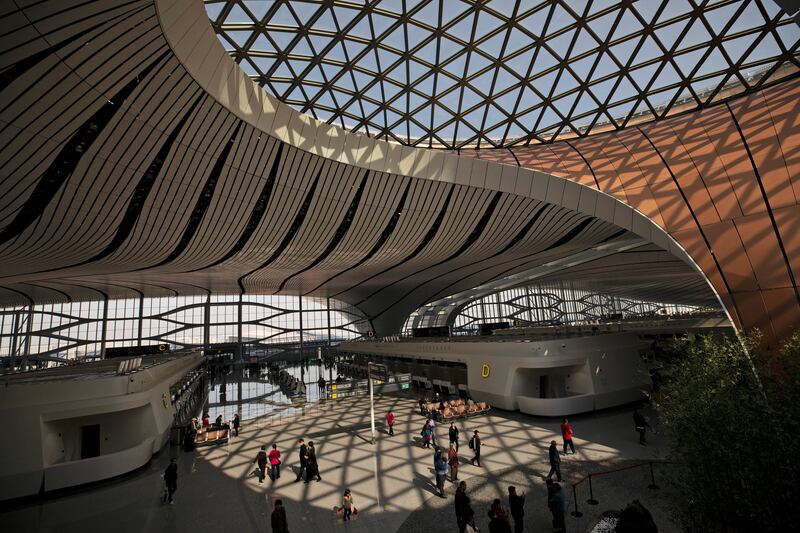Long ago, air travel meant putting on your best clothes for trips to exotic destinations that, paradoxically, usually departed from what was often little more than a glorified shed.
Today the experience has largely been stripped of its glamour, with cramped seating, screaming babies and the choice of beef or chicken making up the bulk of the flying experience.
Now it is airports that capture the excitement and anticipation of flying, the best being destinations in their own right.
Abu Dhabi’s new Terminal A at what will soon become Zayed International Airport, is the latest member of this exclusive club, which can feature everything from art and music, high-end shopping, and even a rain forest.
Here, to make the point, are 10 of the world’s most notable airports.
Changi Airport, Singapore
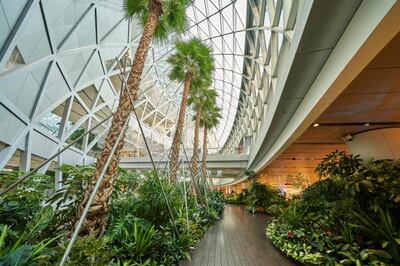
“I can’t believe this airport has a butterfly garden,” says the awestruck Rachel in the 2018 film Crazy Rich Asians. “And a movie theatre. JFK is just salmonella and despair.”
To be fair to New York, most airports in the world come off second to Changi, regularly voted the world’s best by travellers. Opened in 1955, it is now a major aviation centre used by about 70 million passengers a year.
It features prominently in the hit film, which also provided free advertising for Singapore as a tourist destination and led to a boost in visitor numbers after its release.
As well as the butterfly garden, and the world’s only airport Apple Store, there is Jewel, an entertainment complex that features an indoor rain forest and the world’s tallest indoor waterfall, the Rain Vortex, making Changi a destination in its own right.
Schiphol Airport, Amsterdam
As a major European hub, many travellers passing through Schiphol never stop to visit historic Amsterdam and its art museums.
No matter. Welcome to Rijksmuseum Schipol and its collection of Dutch old masters taken from the world famous Rijksmuseum just up the road.
Located just beyond security, the gallery offers a changing selection of Dutch paintings, and is open 24 hours and seven days a week.
The latest exhibition Longing for Nature, “‘reflects the changing relationship between humans and the natural world over the 19th century”, according to the curators. For younger visitors, the nearby Nemo science museum, also airside, offers hands-on activities for children.
Naturally there is a museum shop, along with a public library and outlets specialising in Dutch products from tulips to Edam cheese.
Ashgabat International Airport, Turkmenistan
Previously known as Saparmyrat Turkmenbaşy International Airport, after the country’s eccentric former leader, the airport is built in the unmistakeable shape of a gigantic falcon with outstretched wings.
Said to have cost $2 billion (Dh7.35 billion), the airport opened in 2016, with the design echoing not just the bird of prey, a national symbol, but a bow symbolising Oghus Khan, a legendary leader of the Turkic people, celebrated for his dragon-killing exploits.
Former leader Saparmyrat Turkmenbaşy is famous for building an enormous rotating statue of himself, which constantly faced the Sun. His influence extended to the old airport, ordering the control tower to be built in a location that partially obstructed the view of aircraft landing because it “looked better this way”
Hamad International Airport, Qatar
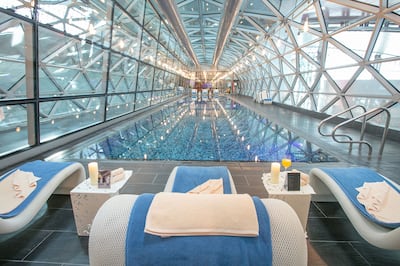
Serving Doha, Hamad International Airport was described as the “world’s most luxurious” by CNN Traveller in 2021.
Opened in 2014, it features dozens of artworks, including Lamp/Bear, a giant teddy bear under a black lamp by Swiss artist Urs Fischer and eight bronze oryx by the Dutch sculptor Tom Claassen.
The airport gym features a 25m swimming pool, with shops that include Gucci, Rolex and Swarovski. The Oryx, a 100-room transit hotel inside the terminal offers fivestar luxury for weary travellers.
Hamad International is also a silent airport, meaning that no announcements are made on the public address system beyond the call to prayer.
Hamburg International Airport, Germany
When it comes to airports, there are a lot of candidates for firsts. The world’s oldest airport still operating is College Park in Maryland, which opened in 1909, but now serves only private pilots.
Several early terminals survive as protected buildings, including London’s Gatwick Beehive from 1936, but no longer host passengers. Orly airport in Paris was the first to have baggage carousels in 1958, while the first jetway air bridge began operating at San Francisco a year later.
The oldest continuously operating international airport, though, is Hamburg International, which opened in January 1911, used in its early days mainly for airships. Its two terminals were built in 1993 and 2005. Honourable mentions go to Bucharest International Airport in Romania, which opened in 1912, and Rome’s Ciampino Airport, which dates from 1916.
Dubai International Airport
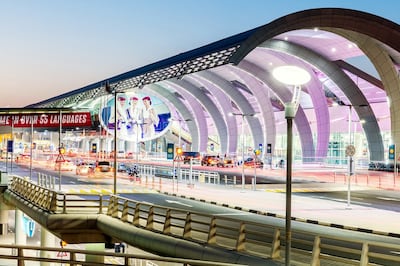
The international airport in Dubai might have been built with superlatives in mind. Not only is it the busiest airport in the world in terms of international traffic, Terminal 3 is the world’s biggest airport terminal by floor space.
A huge range of duty-free outlets also means it is top of the list for airport shopping, while Concourse A is the world’s first purpose-built facility for the Airbus 380 superjumbo, operated by Emirates. The baggage-handling system uses 90km of conveyor belts to move 15,000 items an hour – again the largest in the world.
The airport opened in 1963 on the outskirts of Dubai. The city’s growth means it is also one of quickest in the world to reach.
King Abdulaziz International Airport
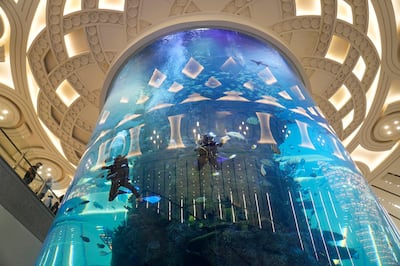
Saudi Arabia’s busiest airport serves Jeddah but also the holy city of Makkah. For a month each year it also welcomes about a million pilgrims for the Hajj pilgrimage.
To accommodate these vast numbers, the airport has built a Hajj terminal, capable of processing 80,000 people at any one time and which can handle more aircraft simultaneously than any airport in the world.
Designed by Pakistani-American architect and structural engineer Fazlur Rahman Khan, it features a roof designed to resemble more than 200 tents, suspended from pylons.
Only customs and immigration and baggage handling are air conditioned. The rest of the building is open at the sides, with shade provided by the roof, and featuring a souq and a mosque.
Long Beach Airport, California
Airports are not generally the most relaxing places, but Long Beach, part of the greater Los Angeles area, may be the coolest, most laid back in the world.
The mild California weather means that its concourse is open air, with fire pits, palm trees and a wine bar. Its single terminal opened in 1941 and is considered a classic of Art Deco architecture and is listed as a historic landmark.
Still in use, the terminal was renovated in 2012, which uncovered a series of murals painted by Grace Clements, commissioned during the Great Depression as part of the government’s New Deal programme.
Long Beach was also where the first transcontinental flight in America was made in 1911, landing on the beach in the absence of a runway.
Beijing Daxing International Airport
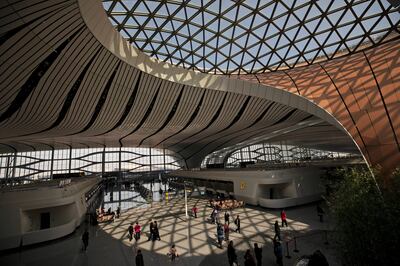
The Chinese capital’s newest airport, opened in 2019, was designed by Zaha Hadid Architects, and is known as the starfish for its distinctive shape and radial layout.
The design is actually said to be based on traditional Chinese architecture, featuring a central courtyard which includes check-in, restaurants and shops. Four of the five “arms” are aircraft piers, with the fifth featuring a hotel and a station connecting to the city 50km away with high-speed trains running at 250kph.
The airport uses facial recognition for security and radio tracking for baggage handling, while its design means that despite its huge size, no gate is more than an eight-minute walk from the central hub.
With four runways and nearly 80 gates, Beijing Daxing is built to handle about 45 million passengers a year, rising to 80 million in the future.
The Covid-19 pandemic, which began just weeks after the airport was built, has hit it hard, with just 10 million passengers last year.
Incheon International Airport, South Korea
For a taste of South Korean culture, travellers need go no further than Seoul’s Incheon airport, which opened in 2001.
Several times a day the concourse is filled with performances featuring traditional costumes and music. Three cultural centres give passengers the chance to try their hand at Korean crafts, along with an interactive taekwondo experience.
A Korean Cultural Street in Terminal 1 displays replicas of old giwajip houses with tiled roofs, while a highlight is the “walk of the royal family” with performers in costumes of kings and queens of the Joseon dynasty, founded in the 14th century.
Numerous pieces of modern art round off the airport experience, with an open-air rooftop terrace giving views of the surrounding countryside. The airport features a skating rink with artificial ice, cinemas and a free shuttle service to nearby golf courses.
